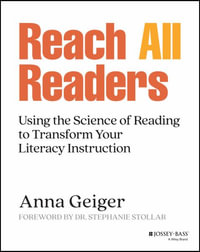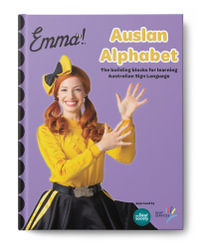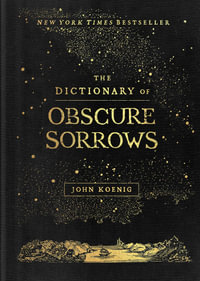| List of tables and figures | p. ix |
| Series editor's foreword | p. xii |
| Preface | p. xiv |
| Acknowledgments | p. xvii |
| List of abbreviations | p. xxi |
| Introduction | p. 1 |
| Introduction | p. 1 |
| Research questions | p. 5 |
| The ecology of bilingual development | p. 7 |
| The Hong Kong speech community | p. 9 |
| Bilingual development and language contact | p. 12 |
| Mechanisms of language contact | p. 14 |
| Summary | p. 19 |
| Overview of the book | p. 20 |
| Theoretical framework | p. 22 |
| Epistemological status of bilingual acquisition | p. 22 |
| The logical problem of bilingual acquisition and the poverty of the dual stimulus | p. 30 |
| Language differentiation in bilingual acquisition | p. 33 |
| Language dominance in early bilingual development | p. 35 |
| Cross-linguistic influence in bilingual development | p. 37 |
| Input ambiguity and learnability | p. 44 |
| Vulnerable domains in bilingual development | p. 49 |
| Bilingual development and language contact | p. 50 |
| Summary | p. 54 |
| Methodology | p. 56 |
| Methodologies in the study of bilingual acquisition | p. 56 |
| The Hong Kong Bilingual Child Language Corpus and other data for this study | p. 63 |
| Quantitative measures of bilingual development: language dominance and MLU differentials | p. 72 |
| Other indicators of language dominance | p. 81 |
| Conclusions | p. 84 |
| Wh-interrogatives: to move or not to move? | p. 87 |
| Wh-interrogatives in English and Cantonese | p. 88 |
| Wh-interrogatives in bilingual children | p. 93 |
| Emergence and order of acquisition of wh-phrases in English and Cantonese: bilingual and monolingual children compared | p. 104 |
| Discussion: language dominance, input ambiguity and asymmetry | p. 119 |
| Wh-in-situ in contact languages | p. 123 |
| Conclusions | p. 126 |
| Null objects: dual input and learnability | p. 133 |
| Null objects in adult Cantonese | p. 134 |
| Null objects in English: cross-linguistic influence and learnability | p. 136 |
| Input ambiguity and language dominance | p. 147 |
| Null objects in Singapore Colloquial English | p. 152 |
| Conclusions | p. 152 |
| Relative clauses: transfer and universals | p. 155 |
| Introduction | p. 155 |
| Development of pronominal relative clauses in the bilingual children | p. 162 |
| The emergence of postnominal relatives in English | p. 170 |
| Accounting for transfer | p. 174 |
| Relative clauses in Singapore Colloquial English | p. 181 |
| Conclusions | p. 184 |
| Vulnerable domains in Cantonese and the directionality of transfer | p. 189 |
| Placement of prepositional phrases in bilingual children's Cantonese | p. 190 |
| Dative constructions with bei2 'give' in bilingual children's Cantonese | p. 200 |
| Bidirectional transfer in verb-particle constructions in bilingual development | p. 216 |
| Conclusions | p. 223 |
| Bilingual development and contact-induced grammaticalization | p. 227 |
| Contact-induced grammaticalization | p. 228 |
| Already as marker of perfective aspect | p. 235 |
| Give-passives and replica grammaticalization | p. 239 |
| One as nominalizer | p. 248 |
| Discussion | p. 251 |
| Conclusions and implications | p. 255 |
| Theoretical issues | p. 256 |
| Methodological issues | p. 260 |
| Implications for first and second language acquisition | p. 260 |
| Implications for language contact | p. 261 |
| Prospects for future research | p. 262 |
| References | p. 265 |
| Index | p. 287 |
| Author index | p. 292 |
| Table of Contents provided by Ingram. All Rights Reserved. |

![Collins Pocket Italian Dictionary [Eighth Edition] : 40,000 Words and Phrases in a Portable Format - Collins Dictionaries](https://www.booktopia.com.au/covers/200/9780008183646/5907/collins-pocket-italian-dictionary-eighth-edition-.jpg)
![Collins Easy Learning Complete French Grammar, Verbs and Vocabulary (3 Books In 1) [2nd Edition] : Collins Easy Learning French - Collins Dictionaries](https://www.booktopia.com.au/covers/200/9780008141721/5905/collins-easy-learning-complete-french-grammar-verbs-and-vocabulary-3-books-in-1-2nd-edition-.jpg)
![Collins English Dictionary Complete and Unabridged Edition [14th Edition] : More Than 730,000 Words Meanings and Phrases - Collins Dictionaries](https://www.booktopia.com.au/covers/200/9780008511340/0814/collins-english-dictionary-complete-and-unabridged-edition-14th-edition-.jpg)



![Collins Spanish Dictionary And Grammar : 120,000 Translations Plus Grammar Tips [Eighth Edition] - Collins Dictionaries](https://www.booktopia.com.au/covers/200/9780008241391/6208/collins-spanish-dictionary-and-grammar.jpg)
![Collins German Dictionary And Grammar : 112,000 Translations Plus Grammar Tips [Eighth Edition] - Collins Dictionaries](https://www.booktopia.com.au/covers/200/9780008241377/6208/collins-german-dictionary-and-grammar.jpg)


![Collins French School Dictionary : Trusted Support For Learning [Fifth Edition] - Collins Dictionaries](https://www.booktopia.com.au/covers/200/9780008257965/6212/collins-french-school-dictionary.jpg)





![Collins Japanese Dictionary Essential Edition : 27,000 Translations For Everyday Use [Second Edition] - Collins Dictionaries](https://www.booktopia.com.au/covers/200/9780008270711/6212/collins-japanese-dictionary-essential-edition.jpg)

![Collins Arabic Dictionary Essential Edition : 24,000 Translations For Everyday Use [Second Edition] - Collins Dictionaries](https://www.booktopia.com.au/covers/200/9780008270681/6207/collins-arabic-dictionary-essential-edition.jpg)




